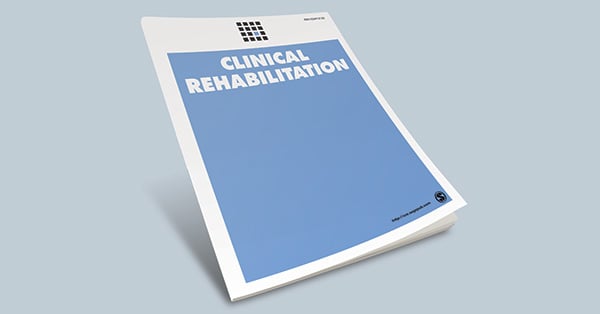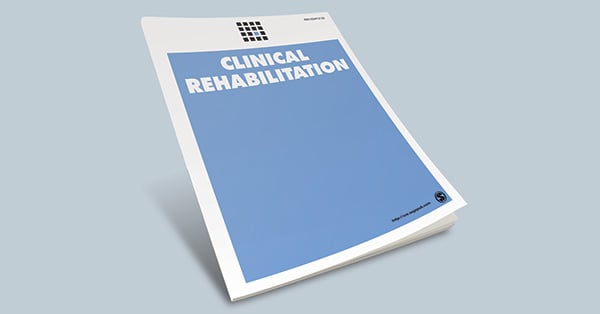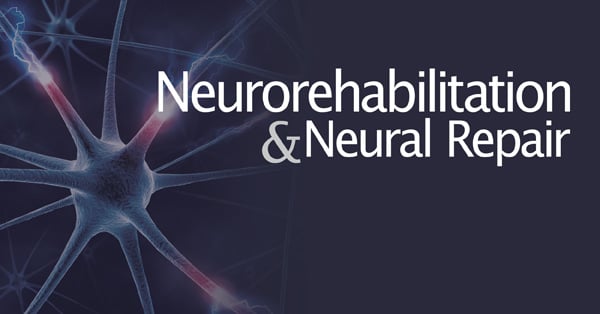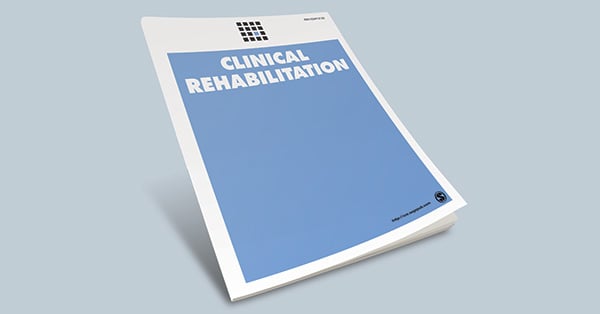
Clinical Rehab
@ClinicalRehab
Clinical Rehabilitation is a highly ranked, peer-reviewed, multi-professional journal covering the whole field of disability and rehabilitation.
DW. This randomised trial of exoskeletons for people with spinal cord injury is impressive, with 2 weaknesses: unequal allocation (68v47) despite block allocation, & selective loss from the control arm. However, there was no difference between the groups. doi.org/10.1016/j.apmr…
DW. Two vital aspects of rehabilitation are the professional-patient relationship and teaching self-management; a recent study investigated both, highlighting challenges. We must train therapists/nurses/doctors how to develop therapeutic relationships. doi.org/10.1177/026921…

DW. Are we too afraid to recommend more activity after stroke (and in most other conditions)? Gert Kwakkel thinks so; I agree. He has commented on a recent trial of increased walking exercise after stroke. A short, easy read: doi.org/10.1016/S1474-…
DW. Practice improves function; this is a central tenet of rehabilitation. A recent trial demonstrates that a protocol to increase walking practice after stroke is effective. We must help patients to practice without professionals. doi.org/10.1016/S1474-…
DW. An updated Cochrane systematic review of virtual reality in stroke rehabilitation identified 190 trials; however, the evidence only allowed for weak conclusions. cochranelibrary.com/cdsr/doi/10.10…. Why was this? My editorial discusses reasons cochranelibrary.com/cdsr/doi/10.10….
DW. The probability of spontaneous regression of lumbar herniated disc: a systematic review. Ten years after publication, this article is 'trending' on Altimetric. Why such a delay? doi.org/10.1177/026921…

DW. A new paper exploring the concept of financial capability in people with cognitive impairment, a significant issue in rehabilitation. There are many ideas about what it is and how to assess it. doi.org/10.1177/026921… A Rehabilitation in Theory paper journals.sagepub.com/topic/collecti…

When offered weekend speech therapy, patients valued the different, more social environment. We should pay more attention to a rehabilitation environment that facilitates adaptation and practice rather than direct therapy. pmc.ncbi.nlm.nih.gov/articles/PMC12…

DW. Technological aids in rehabilitation need as much research & evaluation for effectiveness & harm as drugs & other interventions. A study evaluated an iPad programme to aid goal setting; this is the second evaluation, showing improvement from the first doi.org/10.1177/026921…

DW. Self-rehabilitation is practising and adapting without a professional present; it typically follows advice from a professional. A systematic review finds individual practice as effective as practising with a therapist. doi.org/10.1177/154596…

DW. We fail to identify most people unable to make sound healthcare decisions. Routine screening might help if simple and short. The Mental Capacity Screening Assessment Tool (MCScreen) should be considered. doi.org/10.1016/j.clin…
DW. Does 'cognitive retraining' after stroke have an impact on functional activities? Probably not. The evidence is suggestive, not conclusive. doi.org/10.1177/026921… Task-specific training is likely more effective.

DW. Non-pharmacological treatment for depression after stroke would avoid the cognitive side effects of drugs, if it helps. A systematic review identifies many techniques tried, but the evidence base is too small to enable any recommendation. doi.org/10.1177/026921…

DW. An observational study in Canada suggests that delays in providing wheelchairs to patients who need them may increase length of stay. The delays were between 1 and 9 days. The UK would have a bigger delay and should replicate this. doi.org/10.1016/j.apmr…
DW. The classification of traumatic brain injury severity has been based on the initial Glasgow Coma Scale score for decades. It was simple and applied widely, A new system has been developed. It is too complex for general use. It only considers pathology. doi.org/10.1016/S1474-…
DW. A significant study on somatic symptoms following concussive head injury. Suggests that psychological factors are a significant contributing factor. doi.org/10.1097/HTR.00…
DW. Patient education may improve outcomes if (a) education succeeds and (b) the learned knowledge leads to action that helps. A trial of education about osteoarthritis gave information but had no clinical effect. Maybe surgery is needed to reduce pain. doi.org/10.1016/j.pec.…
DW. A novel, non-surgical non-pharmacological treatment for chronic pain: EEG entrapment. A well-designed study was conducted on 24 people with fibromyalgia. It is feasible; further trials are essential. doi.org/10.1016/j.jpai…
DW. Enablement theory (doi.org/10.1016/j.apmr…) underlies the analysis of clinical rehabilitation data within the holistic biopsychosocial model of illness. (doi.org/10.1177/026921…) Treatment theory is sometimes separated, but the two are completely interwoven.

DW A paper on whether people with a prolonged disorder of consciousness (PDOC) feel pain supports a 1991 paper in saying, 'yes, probably'. journals.sagepub.com/doi/10.1177/02…
